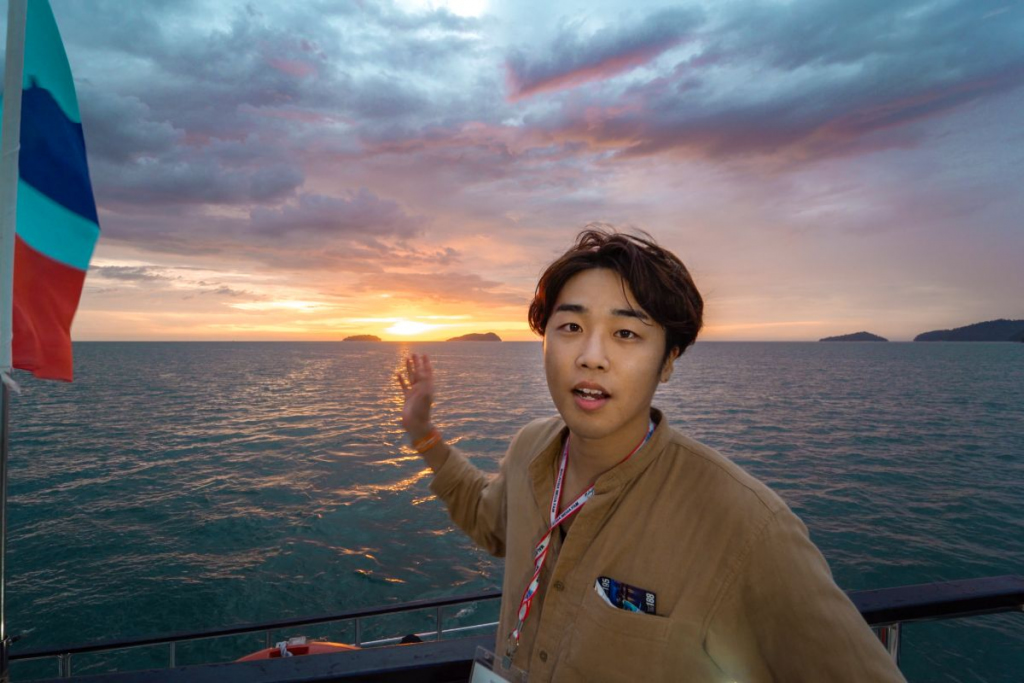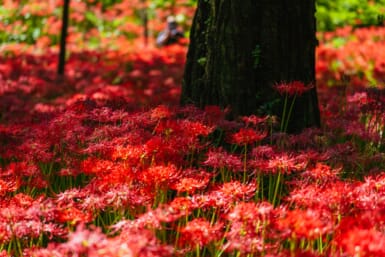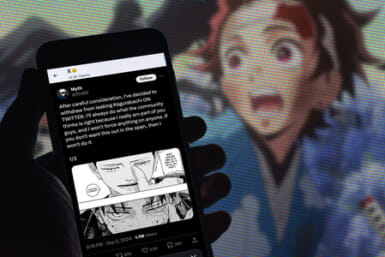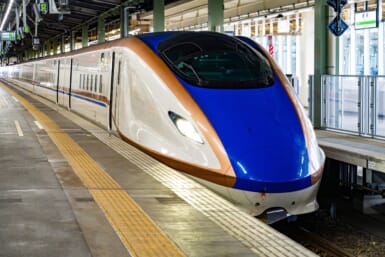As a destination, Malaysia might not be on everyone’s radar. One Japanese YouTuber is adamant about changing that and introducing a side of the country that few have seen. Meet Aki from Japan, a content creator based in this sunny Southeast Asian country. His bilingual videos are not only beautifully cinematic but portray elements of life in Malaysia in an educational and insightful way. We chat with him in this interview to discuss what inspired him to pick up the camera and why Malaysia is the number one country that Japanese nationals want to live in, long term.
1. What first brought you to Malaysia and what made you start documenting your life there on YouTube?
When I was in high school in Japan, I met an amazing English teacher who spoke fluent English even though he was 100 percent Japanese. He spoke often about his travels and his time abroad experiencing different countries and making friends from different backgrounds. He really inspired me which was how I ended up studying and becoming an English teacher at a local high school.
I found teaching English enjoyable, but I began to realize that I didn’t have many fascinating stories to share. I wanted to be able to impart life lessons to my students the same way my teacher had done to me. I needed to explore more so I could see some of the things he had previously told me about.
This is how I came to the decision to quit my job and move to Malaysia. Since then, I’ve spent a lot of money on traveling within Malaysia and in South East Asia and on camera gear, so I can share the real Malaysia with the world. Moving here has made me realize how much I love filming and I’m so thankful to this country for helping me find my passion.
2. What is the Malaysian perception of Japanese people and the culture? Was there much culture shock when you first moved?
I feel that Malaysians have a lot of respect for Japanese culture. Many of them enjoy Japanese anime, songs and Japanese food. I was surprised to see that there are so many Japanese restaurants owned by local Malaysians. When I take a taxi, lots of taxi drivers ask me where I’m from. As soon as they realize I’m Japanese, many of them start asking questions about Japan or talking about their trips there and some of them even speak to me in Japanese. I can really feel their love for Japan.
In terms of culture shock, there are many but the three biggest ones for me when I first moved here were Muslim culture, the laid-back attitude of many Malaysians and the bathrooms. Islam is the official religion of Malaysia so things like pork and alcohol are not commonly found or are expensive to procure. During my first company orientation, my Malaysian boss told me that although being late is not ideal, once or twice a week was fine. It was at this moment that I realized I had moved to the right country. As for my comment on the bathrooms, you’ll just have to see for yourself when you come to Malaysia.
3. Quite a lot of Japanese are moving to Malaysia for their retirement, including the musician Gackt. Why do you think this is happening?
Many Japanese people dream of living a stress-free life in a tropical climate for their retirement. There are several options, but Malaysia is one of the most suitable countries for Japanese when it comes to food, language, safety, location, cost of living and so on. Malaysia has many Japanese restaurants, schools and hospitals, allowing us to move here without worrying too much. In fact, for 14 consecutive years in a row, it has ranked the number one country that Japanese people want to live in for long stays.
In my video Why Japanese People Wanna Live In Malaysia, I go into more detail about the cost of living, the options for local tourism and the conveniences that come with living in Malaysia. However, one thing that isn’t cheaper here is truly authentic Japanese food, which can be quite costly compared to Japan.
4. What do you miss about Japan?
I miss winter activities. My hometown has lots of snowy mountains, so I miss snowboarding with my friends and, of course, soaking in a hot spring after that. I also miss experiencing hanami and cherry blossoms in spring. Watching sakura trees at the peak of their bloom soothes me so much, just like it does for every Japanese person. But the one thing I miss the most is my family.
5. Your style of shooting is quite different from other Malaysia-based content creators. What inspires you to shoot Malaysia through such a unique perspective?
For the past one and a half years, I had to spend a lot of time inside my house and around my neighborhood seeing pretty much the same scenery every day. That situation allowed me to focus on the things around me like trees, grass and insects. I decided to take an even closer look at them through a macro lens and I realized I had been missing out on so much beauty. So, it was my curiosity that inspired me.
It’s a similar story to my time-lapse videos. If you keep looking at the same view, you might get bored with it. But in a form of time-lapse, you can clearly see the sky color changing, clouds moving and the cars running. It will make you appreciate the beauty around you once again. Time-lapse and macro shooting are just two of many tools that help revalue the things around us, and ironically, I would have missed those things if it weren’t for the global pandemic.
6. What are some of the challenges with being a YouTube content creator?
From time to time, I fall into a dilemma between my passion and people’s expectations. As long as you’re on this platform, you’re more or less caught up in the “view count” game. If I put too much emphasis on getting views, I’ll have to give up what I really want to do in order to follow trends. But if I completely ignore getting people’s attention, the videos will only be self-satisfaction. So, it’s very difficult to keep a good balance between the two.
7. What kind of equipment are you using to produce your videos? Do you have any camera or gadget recommendations?
My main camera is a Sony a7sIII and my secondary camera is a Sony a7III. I’m a Sony user so I can’t comment much on other brands, but the Sony a7c is a great camera for beginners. It’s priced at around ¥200,000 which might seem a bit expensive and over-specced for someone who is just starting out. However, if you think of it in the long term, it’s a great investment as it is very versatile. You can use it for both casual vlogging and professional-level videography and photography. It’s compact in size and comes with a flip screen which is essential if you’re planning to vlog by yourself.
Buying gadgets is exactly like getting yourself weapons in an RPG game. The better equipment you have, the smoother the game will be. As you grow your audience, you are going to want to upgrade your gadgets sooner or later, so you should invest in a good camera especially if you’re serious about becoming a content creator.
8. Which of the videos on your channel is your favorite one so far and why?
My favorite video is A Japanese Visits Local Malaysian School. I uploaded this back in February 2020, just before the start of the pandemic. The video documents my visit to a local Malay school. It was such a wonderful experience to talk and interact with students and I was able to see so many differences between the culture at Japanese schools and Malaysian schools. I was also really touched by the kindness and friendliness of the students. When I look back at this video, it reminds me of all the good memories and makes me want to go back there.
9. What are some of the things that Japanese can learn from Malaysians and that Malaysians can learn from Japanese?
People in Malaysia are so much more relaxed, casual and laid back, especially when it comes to work. They have a good work-life balance. They don’t work too hard nor is there a strict hierarchy or manners expected of you. A boss and his subordinates can talk to each other like friends. In Japan, many people commit suicide due to things like stress, power harassment and overworking. If we can incorporate this Malaysian laid-back style to Japanese companies, people will be able to work more happily.
When it comes to customer service, Japanese service is certainly one of the best in the world. This is because Japanese people work very earnestly and treat customers with a high level of hospitality. In Malaysia, hospitality workers can be very friendly, but they sometimes lack professional manners. I’ve seen some rude behavior from staff members from time to time so maybe this is something Malaysia could look towards Japan on.
10. Any advice you would like to give to aspiring content creators?
There are thousands of creators coming into the YouTube platform, so the competition is getting higher and higher. If you don’t keep updating your content, it will become obsolete and eventually forgotten. So, when it comes to content creation, make sure you put 100 percent of your effort and skills to use. Be humble about it and do not forget to continue learning.









